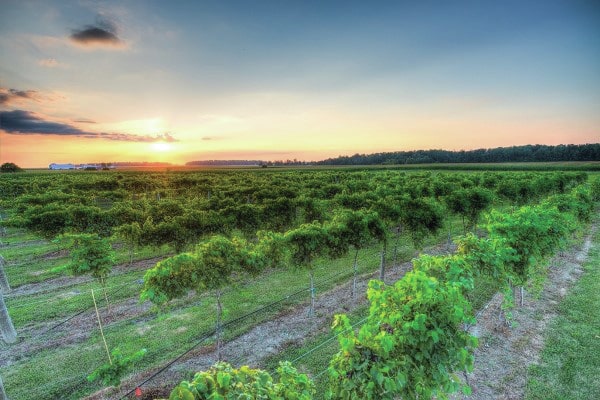
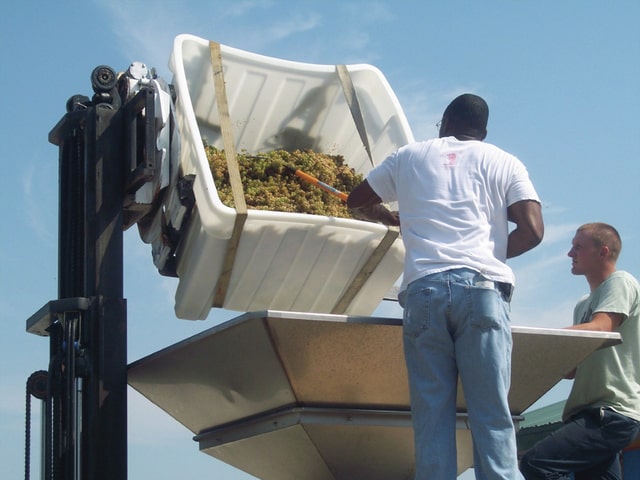
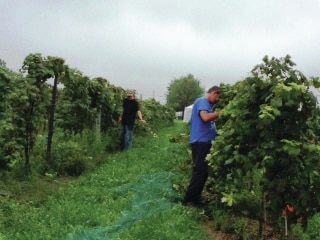
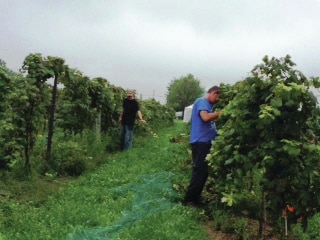
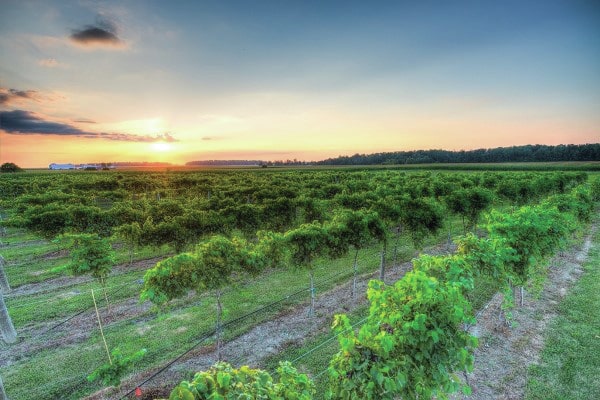
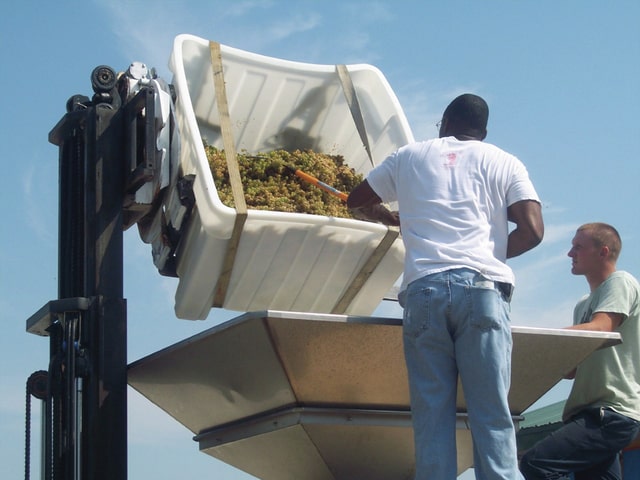
VERSAILLES — The Winery at Versailles makes every effort to source as much local fruit as possible for the production of its wines.
This year it will process fruit from over a dozen local growers, and there are a number of others who have vineyards that are not yet producing. A vineyard will not yield a real crop until its third year in the ground. Grapes will grow on the vine, but these should be removed early in the growing season. For the first couple of years, all water and nutrients need to be focused towards the growth of the vine. Any effort to produce a crop before the vineyard is firmly established is detrimental to the long term health of the vines.
Some more so then others, but in general grape vines are very vigorous plants. In the right soil types, their roots can easily reach a depth of 15-20 feet. This is what allows older vineyards to be fruitful even in the dryer years. Regardless of the root depth, the vines themselves require substantial pruning each and every year. All grapes are produced by new growth of the vine each year.
Most local vineyards consist of French-American hybrid grape vines. This is due to the fact that most Vitis-Vinifera(European) grape varieties cannot withstand our cold winters. On the other hand, the Vitis-Labrusca(American) varieties don’t have the same value to a winery. Hybridization allows us to grow a seemingly endless selection of wine grape varieties that can weather the winter months, and still produce a significant crop of wine grapes. Grapes such as Vidal Blanc, Chambourcin, Marechal Foch, and Traminette are common in vineyards throughout Darke, Mercer, Shelby, Auglaize, and Logan County.
If managed properly, a vineyard can be a profitable adventure. However, it is important to remember that it is a substantial long-term investment. To establish a productive vineyard, an individual could budget $15,000 per acre over the course of the first three years. This would include: cost of the vines themselves, poles and wire for trellis, and irrigation line among other things. This cost would not include drilling a well for said irrigation, or any equipment such as a tractor or sprayer.
Training the vines to control their growth is not a complex undertaking, but is can be very laborious. Yearly pruning does get easier as the vines mature, but there will always be work to do in the vineyard. Weed control, along with a spray program for vine health and fruit quality are concerns each and every year. Also, as harvest nears bird control can become a serious issue. Netting to cover the vines is one solution, but it is also another expense.
So, the planting of grape vines for wine production is not to be taken lightly. As mentioned above, it is a substantial investment and there is very much work involved. But when the work is done, a vineyard can generate thousands of dollars each year and if maintained these same vines can be fruitful for decade after decade. People who grow grapes are to be admired as individuals who have not only invested in their future, but in the future of generations to come.







